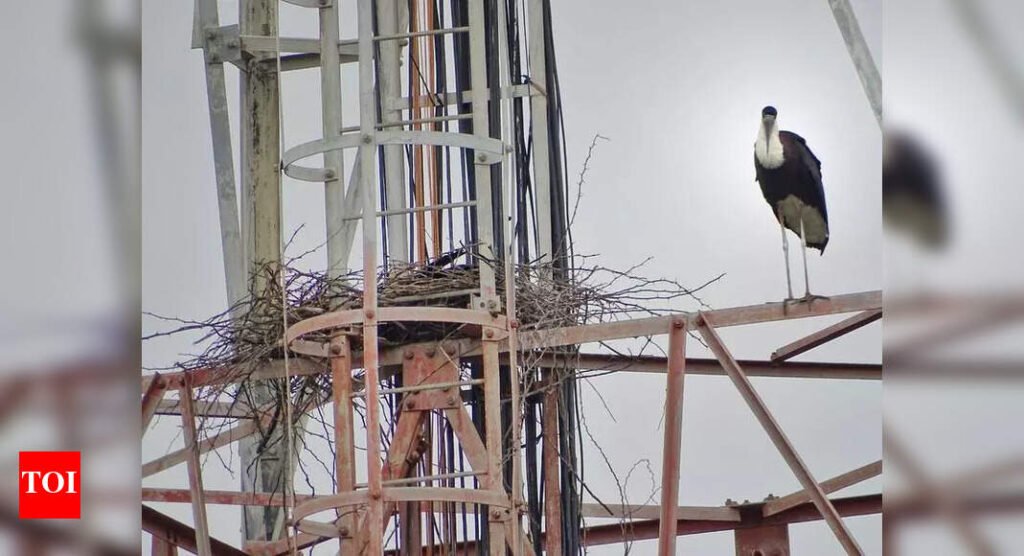Vadodara: The woolly-necked stork (Ciconia episcopus) — a magnificent wading bird standing nearly 3.3 feet tall — is adapting its nesting habits to Vadodara’s evolving landscape. These remarkable birds, traditionally known for building their elaborate nests in the crowns of tall trees, are choosing telecommunication towers as their preferred nesting sites. This behaviour, studied in rural Vadodara, is said to be rare. Dr Anika Tere, an ornithologist based in Vadodara, has documented this phenomenon in her groundbreaking study. The research, published in The Waterbird Society’s international journal, reveals a surprising preference for artificial structures despite the abundance of traditional nesting options in the region’s lush canopy.“What makes their behaviour interesting is that these storks have an option of building nests in the many trees that are around the communication towers. The talukas where we studied their nesting pattern are lush green and have many tall trees. But the storks chose the high towers instead,” Tere told TOI.The birds’ choice could be a sophisticated anti-predator strategy. “Though we can’t exactly pinpoint the reasons behind this behaviour, a possible reason might be to avoid predators. The mobile towers are 130 to 150 feet high, and not many predators, including reptiles, can climb that high on a metal structure. Also, the metal structures give the storks a flat, balanced, and strong base to build their nest,” Tere explained.According to Tere, these opportunistic feeders have been returning to the same towers year after year, suggesting the success of their adaptive strategy. This might prove crucial for survival of the species, classified as ‘Near Threatened’ by the International Union for Conservation of Nature (IUCN) due to habitat loss and human encroachment. Tere said she first spotted a woolly-necked stork’s nest on a communication tower in 2020 in a rural area of Vadodara. The next year, she saw five more on towers in five different villages of Vadodara. It was then that the researcher decided to study this rare phenomenon in detail. “The storks also preferred to stay near the human habitat. We recorded 13 such nests — one on each tower – in Dabhoi, Waghodia, and Savli,” she added.The woolly-necked storks breed between July and Oct, which coincides with the monsoon period when their prey, including amphibians, reptiles, large insects, and crustaceans, becomes abundant. Mostly spotted around wetlands, these storks are characterized by their distinctive black plumage with an iridescent sheen and the woolly-textured white neck that gives them their name. Their wingspan, stretching an impressive 5-6 feet, makes them one of the larger stork species in India.


